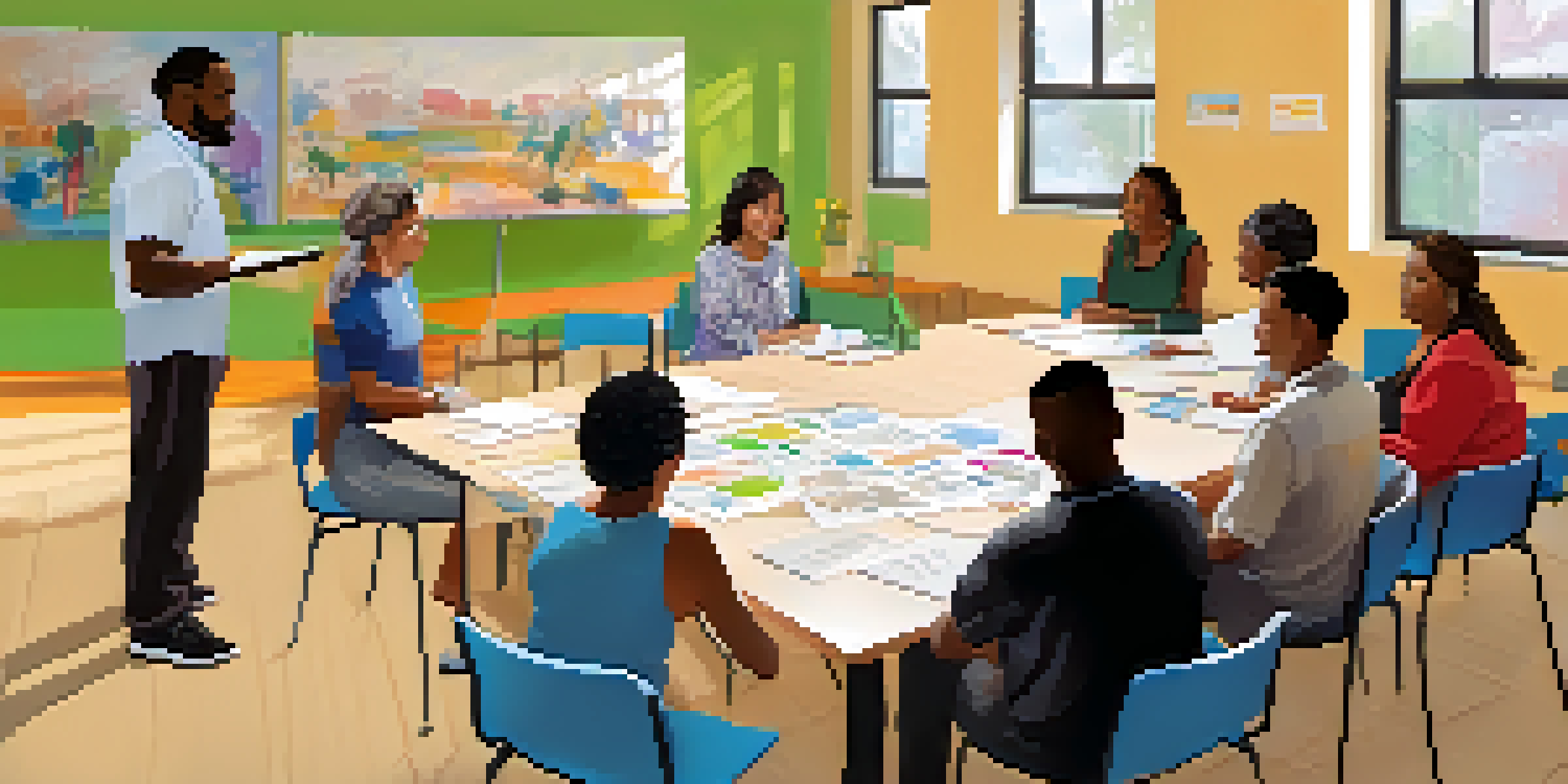Access to Rehabilitation Services: Promoting Health Equity

Understanding Health Equity and Its Importance
Health equity means that everyone has a fair and just opportunity to be as healthy as possible. It involves addressing the barriers that prevent certain populations from accessing healthcare services, including rehabilitation. By promoting health equity, we ensure that all individuals, regardless of their background, can achieve optimal health outcomes.
Health equity means that everyone has a fair and just opportunity to be as healthy as possible.
When we think about health equity, it's important to understand how social determinants, like income, education, and location, can influence access to rehabilitation services. For instance, someone living in a rural area may have limited options for physical therapy compared to someone in an urban setting. This disparity can lead to significant differences in recovery times and overall health.
By recognizing these inequalities, we can begin to implement strategies that promote better access to rehabilitation services. This may involve increasing funding for facilities in underserved areas or providing telehealth options to reach those who cannot easily travel to appointments.
Barriers to Accessing Rehabilitation Services
Barriers to accessing rehabilitation services can take many forms, including financial constraints, transportation issues, and lack of awareness about available options. For many, the cost of rehabilitation can be prohibitive, especially for those without insurance or with limited coverage. This can lead to individuals delaying or forgoing necessary treatment, exacerbating their health issues.

Transportation can also be a significant barrier. Imagine someone who needs regular visits to a rehabilitation center but lacks reliable transportation. This can create a cycle of missed appointments and delayed recovery. Addressing transportation logistics, such as offering community shuttles or telehealth sessions, can help mitigate this issue.
Health Equity Ensures Fair Access
Promoting health equity allows everyone, regardless of background, to access necessary healthcare services, including rehabilitation.
Additionally, many individuals may not fully understand what rehabilitation services entail or how they can benefit from them. Educational initiatives that promote awareness about the importance of rehabilitation can empower individuals to seek the help they need, ultimately improving their health outcomes.
The Role of Policy in Promoting Access
Policy plays a crucial role in shaping access to rehabilitation services. Local, state, and federal policies can either facilitate or hinder access based on how they allocate resources and support healthcare initiatives. For example, comprehensive policies that prioritize funding for rehabilitation in underserved areas can create more equitable access for all.
The greatest wealth is health.
Furthermore, legislation aimed at expanding insurance coverage for rehabilitation services can significantly impact accessibility. When insurance companies include a broader range of rehabilitation services, individuals are more likely to seek the care they need without worrying about the financial burden.
Advocacy is essential in driving policy changes. By uniting communities and stakeholders, advocates can push for policies that prioritize health equity, ensuring that legislative decisions reflect the needs of all individuals, especially those in marginalized groups.
Community Programs that Enhance Access
Community programs play a vital role in bridging the gap in access to rehabilitation services. These programs often provide resources and support tailored to the unique needs of the community. For instance, a local nonprofit might offer free or low-cost rehabilitation services, making them accessible to individuals who would otherwise be unable to afford care.
In addition to direct services, community programs can also focus on education and outreach. Workshops that explain rehabilitation processes and benefits can demystify the experience for many individuals. This kind of proactive approach not only informs but also encourages people to take charge of their health.
Barriers Hinder Rehabilitation Access
Financial constraints, transportation issues, and lack of awareness often prevent individuals from accessing needed rehabilitation services.
Moreover, partnerships between healthcare providers and community organizations can enhance service delivery. By collaborating, they can create integrated care models that address both medical and social needs, ensuring a holistic approach to rehabilitation.
The Impact of Telehealth on Rehabilitation Access
Telehealth has emerged as a transformative tool in increasing access to rehabilitation services. By providing virtual appointments, telehealth eliminates geographical barriers and makes it easier for individuals to connect with healthcare providers. This is especially beneficial for those living in remote areas or those with mobility issues.
The convenience of telehealth allows patients to receive care from the comfort of their homes, which can also reduce the stress associated with travel and waiting rooms. Imagine being able to attend a physical therapy session in your living room while still receiving expert guidance from a therapist. This not only promotes adherence to treatment plans but also enhances overall patient satisfaction.
While telehealth has its advantages, it's important to ensure that all individuals have the necessary technology and internet access to benefit fully. Addressing these challenges will be crucial in ensuring that telehealth continues to play a significant role in promoting health equity in rehabilitation services.
Cultural Competence in Rehabilitation Services
Cultural competence is essential in providing equitable rehabilitation services. It involves understanding and respecting diverse cultural backgrounds, beliefs, and practices, which can significantly impact an individual's healthcare experience. When rehabilitation providers are culturally competent, they can create a more welcoming and effective environment for all patients.
For instance, a therapist who understands the cultural significance of certain practices or family dynamics can tailor their approach to meet the specific needs of a patient. This can lead to better communication, increased trust, and ultimately, improved health outcomes. It’s about building relationships and recognizing that every patient is unique.
Community Programs Bridge Gaps
Community programs provide tailored resources and support, enhancing access to rehabilitation services for underserved individuals.
Training healthcare providers in cultural competence is crucial for fostering an inclusive atmosphere. By incorporating diversity training into rehabilitation programs, we can ensure that all practitioners are equipped to address the varied needs of their patients, further promoting health equity.
Future Directions for Rehabilitation Services and Health Equity
Looking ahead, the future of rehabilitation services and health equity is promising yet requires ongoing commitment and innovation. As we continue to identify barriers to access, there will be a greater push for solutions that ensure equitable care for all individuals. This includes leveraging technology, enhancing community programs, and advocating for policy changes.
The integration of data analytics can also play a significant role in understanding the needs of different populations. By analyzing health outcomes, service utilization, and patient demographics, stakeholders can make informed decisions about where resources are needed most. This data-driven approach can lead to more targeted interventions and improved service delivery.

Ultimately, achieving health equity in rehabilitation services is a collective effort that involves communities, healthcare providers, policymakers, and advocates. By working together and prioritizing access, we can create a future where everyone has the opportunity to achieve their best health.